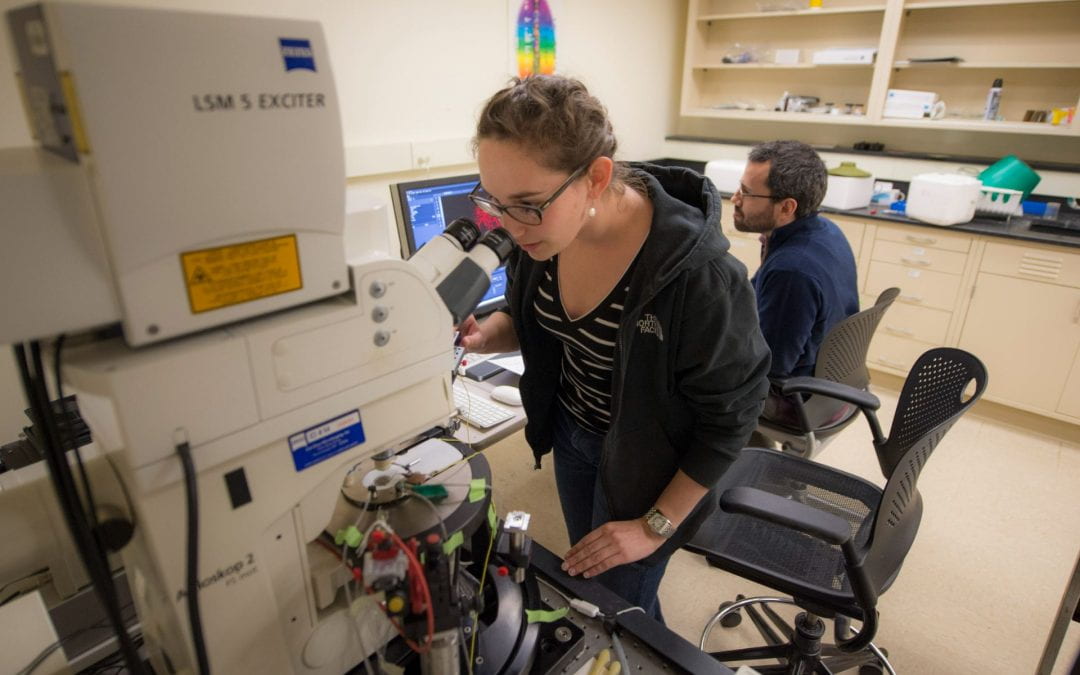Over the last several years, the University of Chicago has undertaken a focused effort to build a coordinated and robust approach to neuroscience, spurred by the launch of the Neuroscience Institute in 2014. The Institute’s initial efforts have been successful in building the neuroscience community across campus, launching a College major, and building collaborative programs.
As the Institute has evolved under the leadership of John Maunsell, PhD, the Albert D. Lasker Professor of Neurobiology, its growing roster of experimental and theoretical faculty have increasingly worked together on unraveling the biological mechanisms of the brain that give rise to perception, thought, memory, and action. A comprehensive study of connectomics, or how brain cells form complex networks of circuits, and how those circuits in turn interact to generate higher-order cognitive and psychological behavior, provides a fresh approach to neuroscience because it sits at the nexus between experimental and theoretical approaches.
“Deeply integrating talented experimentalists and theorists in such a setting can help overcome barriers to interpreting complex biological data, but it has been attempted in only a few places,” Maunsell said. “Focusing on that kind of collaborative approach places UChicago in a position to define this emerging paradigm in neuroscience.”
Theorists and experimentalists working together in tight research groups can develop theories that speak in meaningful and important ways about the mechanisms of cognitive and psychological functioning in the brain. The Neuroscience Institute has embraced this unique collaborative approach by launching the Grossman Center for Quantitative Biology and Human Behavior, a new group focused on computational and theoretical neuroscience. Brent Doiron, PhD, Professor of Statistics and Neurobiology, was recruited to serve as inaugural director of the Grossman Center, and was named chair of the Committee on Computational Neuroscience earlier this summer.
Doiron is in the process of hiring four additional faculty members to join the Center, some to be based in the BSD, but others in the Departments of Statistics, Physics, or Computer Science. Importantly, these new faculty will be housed within the Institute’s physical space amid existing experimental labs. This will allow a group of theorists to work alongside the already stellar experimental groups within the Institute, making UChicago a leader in this new collaborative model.
“One reason for the divide between experiment and theory is that these groups are often physically separated, with experimentalists working in biological or medical departments while theorists are scattered over mathematics, statistics, physics, and computer science,” Doiron said. “Having a critical mass of investigators working in a common center will also create synergy that is often absent in classical quantitative departments where neuroscience research is tangential to the overall department mission.”
Once the Grossman Center’s initial recruiting is completed within the next three to four years, the overall Institute will be home to several tightly integrated experimental and theoretical groups. Together with the broader hiring efforts at the Institute, they will form the core of a center of excellence leading the critical effort to understand the mechanics of the mind.
“Neuroscience as a whole is such a broad and varied field with so many worthy paths of inquiry, from medical challenges such as Alzheimer’s disease, Parkinson’s and schizophrenia to genetic, molecular, and cellular neurobiology,” Maunsell said. “Yet within the field of brain science, there is arguably no other area where UChicago could so readily take the lead and define the field as an integrated program focused on the basis of behavior and thought.”

